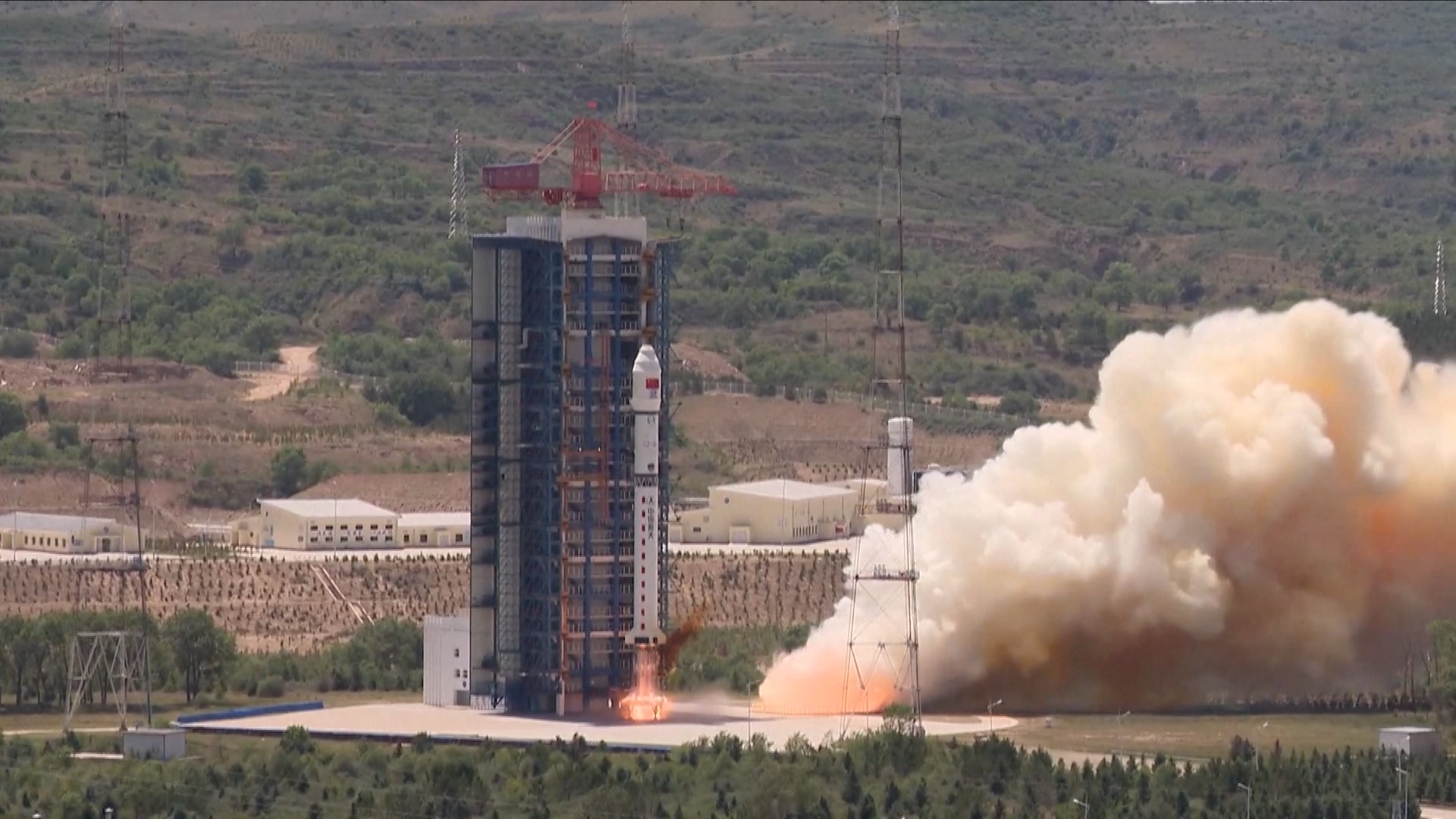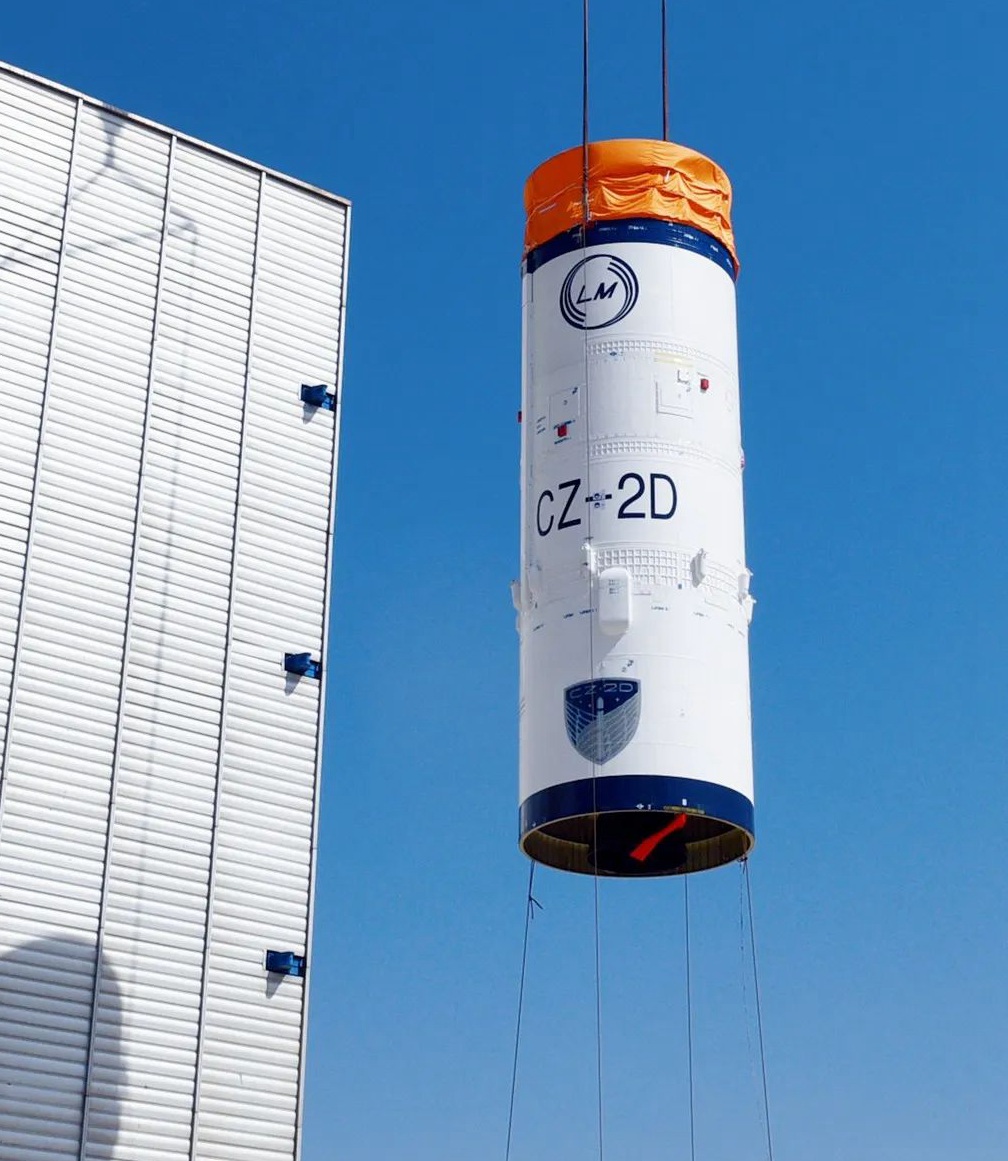00:49

China's Long March-2D carrier rocket blasted off in north China's Shanxi Province on Thursday, sending a record-breaking 41 satellites into orbit.
The rocket took off from the Taiyuan Satellite Launch Center at 1:30 p.m. BJT, sending the satellites, including the Jilin-1 Gaofen 06A, into preset orbit.
The carrier rocket for the launch is a two-stage liquid propellant rocket capable of carrying a payload of 1.3 tonnes into the sun-synchronous orbit at about 700 kilometers in altitude. It can also send several satellites to various orbits when needed.

A part of China's Long March-2D carrier rocket is hoisted for preparation before the launch. /China Aerospace Science and Technology Corporation
A part of China's Long March-2D carrier rocket is hoisted for preparation before the launch. /China Aerospace Science and Technology Corporation
The development of the rocket is led by the 8th Research Institute of the China Aerospace Science and Technology Corporation.
The satellites will be used for commercial remote sensing data services for sectors such as land resources, mineral exploration and smart city construction, as well as verification of related technologies, according to the launch site.
The launch marked the 476th flight mission of the Long March rocket series.
Smaller, cheaper satellites
Thirty-six satellites in the Jilin-1 family are among those aboard the rocket. Developed by commercial satellite maker Chang Guang Satellite Technology Co., Ltd. in northeast China's Jilin Province, they will increase the number of in-orbit Jilin-1 satellites to 108, assembling China's first commercial constellation of more than 100 remote sensing satellites.
The first Jilin-1 group was launched in October 2015. Over the past eight years, the weight of each satellite with the same function has been greatly reduced from 420 kilograms to 22 kilograms.
He Xiaojun, chief designer of the Jilin-1 Gaofen 06A, said the weight reduction has benefited from upgraded image sensors, improved design techniques and advanced integrated chips.
The changes do not affect the resolution of satellite images but expand their visible range by 50 percent. They also lower the cost to one-twentieth of previous satellites, He said.
"Just like the evolution of computers, from bulky desktops to today's laptops and smartphones, the devices have been reduced in size due to technology upgrades, but the computing performance is improving," he explained.
(With input from Xinhua)